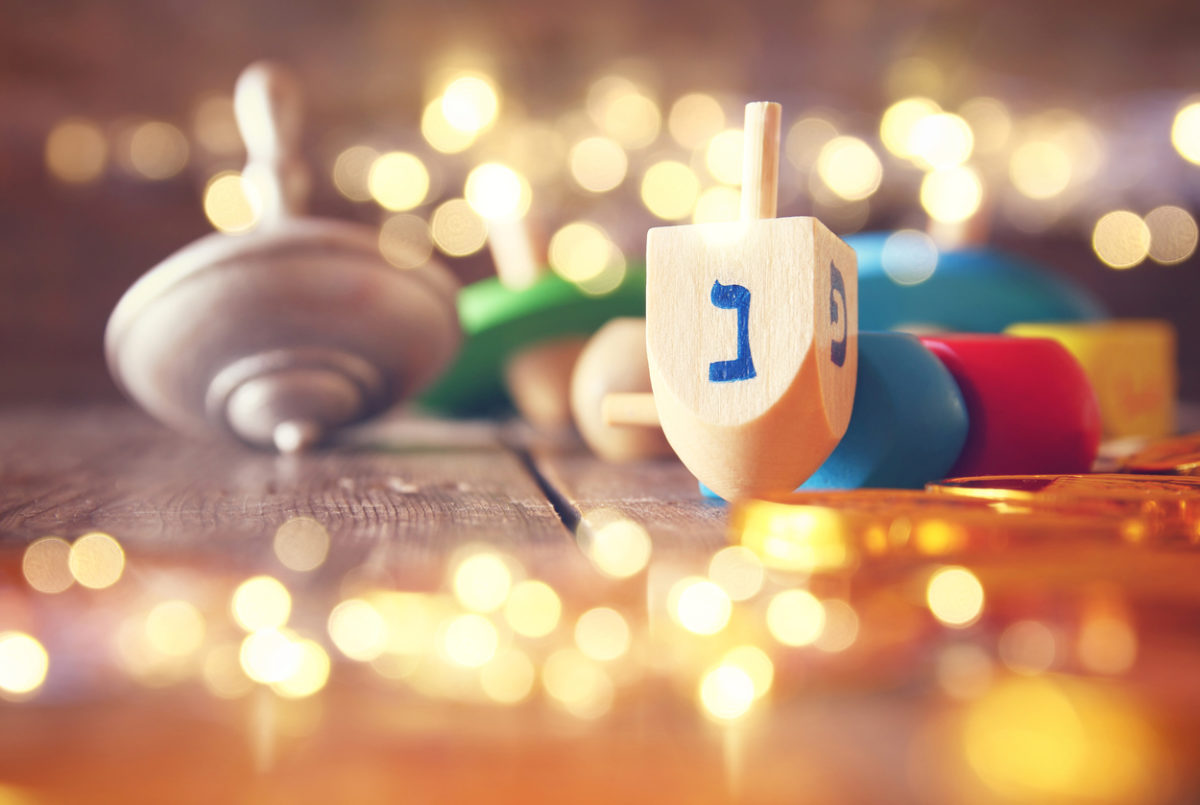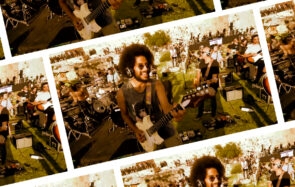Kids today have it pretty good in the toy department–electronic gizmos and digital gadgets and virtual whoziwhatsits and… you get the point. But no matter what’s thrown at them, many children still have the wonderful ability to be entertained by the simplest things: a stick, a bouncy ball, a spinning top.
Along with the eight days of presents and chocolate gelt, dreidels are a great way to get your kids into the Hanukkah spirit. And since there’s no Wii Dreidel (yet), learning the rules of the game can be some good old-fashioned fun for your family.
The Equipment
The dreidel, or sevivon, which means “to turn around” in Hebrew, has a Hebrew letter on each of its four sides. The nun, gimmel, hay and shin stand for the saying, “Nes Gadol Haya Sham,” which translates to “a great miracle occurred there.” “There” referring to Israel, and “the great miracle” referring to the miracle of Hanukkah, of course.
All you need besides the dreidel itself is some sort of game piece. You can use pennies, nuts, jelly beans, or to stick within the Hanukkah vein, chocolate gelt. Whatever you choose, you’ll need about 10-15 pieces per player. Oh, and did we mention that any number of people can play in a game of dreidel? So inclusive!
The Rules
Here a few simple rules of the games taken from A Different Light: The Hanukkah Book of Celebration
1. At the beginning of each round, every participant puts one game piece into the center “pot.” In addition, every time the pot is empty or has only one game piece left, every player should put one in the pot.
2. Every time it’s your turn, spin the dreidel once. Depending on the outcome, you give or get game pieces from the pot:
 |
Nun means “nisht” or “nothing” in Yiddish. The player does nothing. | |
 |
Gimmel means “gantz” or “everything” in Yiddish. The player gets everything in the pot. | |
 |
Hay means “halb” or “half” in Yiddish. The player gets half of the pot. (If there is an odd number of pieces in the pot, the player takes half of the total plus one.) | |
 |
Shin means “shtel” or “put in” in Yiddish. The player adds a game piece to the pot. |
3. If you find that you have no game pieces left, you are either “out” or may ask a fellow player for a “loan.”
4. When one person has won everything, that round of the game is over!
Hanukkah Party
It’s as easy at that. Since little plastic or wooden dreidels tend to show up by the dozens around Hanukkah time, why not give the game a spin at your next Hanukkah celebration? Besides for the Jewish tradition involved, it’s also a fun way to test out some early math skills. Giving your kids their first taste of gambling has never been so educational!








